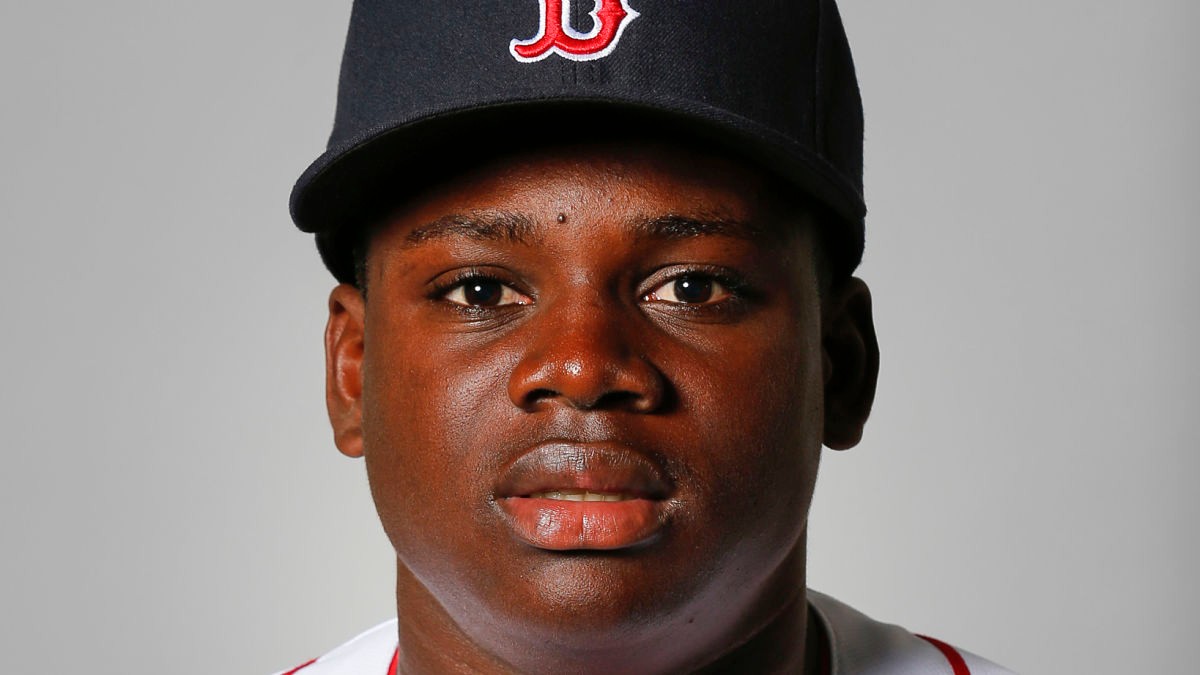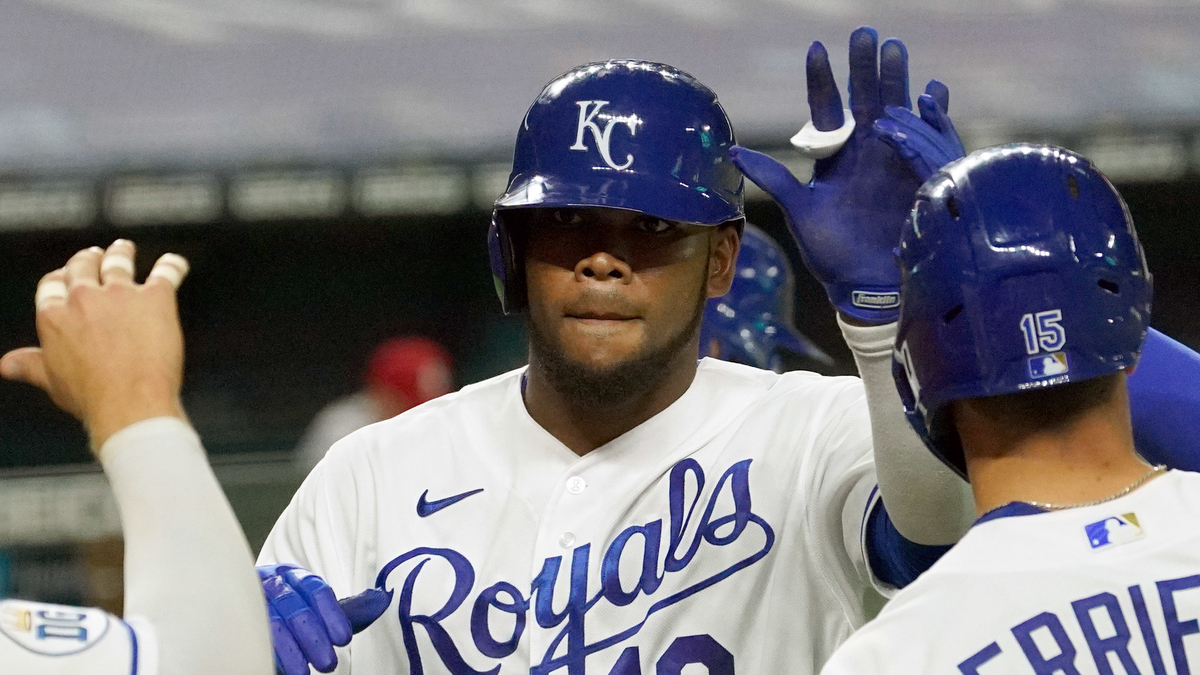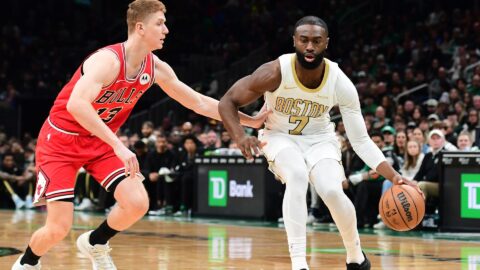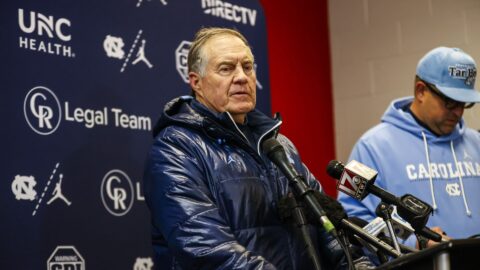In the coming weeks, NESN.com will profile some of the more noteworthy prospects in the Red Sox system, utilizing insight and analysis from industry experts who know the players best. Next up: Ronaldo Hernandez, acquired in February from the Tampa Bay Rays.
Chaim Bloom has pulled off several savvy moves since becoming Red Sox chief baseball officer, creating a greater sense of optimism regarding the future in Boston.
Acquiring Ronaldo Hernandez could be his biggest heist yet.
The Red Sox traded pitchers Jeffrey Springs and Chris Mazza -- both had been designated for assignment to make room on the 40-man roster -- to the Rays for Hernandez and minor league infielder Nick Sogard on Feb. 17.
Of course, landing Nick Pivetta, a possible member of Boston's 2021 rotation, and Connor Seabold, a pitching prospect whom we'll highlight later in this series, in exchange for a month and a half of Brandon Workman and Heath Hembree was a nifty swap by Bloom. As was shipping Mitch Moreland to the San Diego Padres for Jeisson Rosario and Hudson Potts, two farmhands who now rank among the Red Sox's top 20 prospects, according to SoxProspects.com.
But the Red Sox really needed to bolster their organizational catching depth, and Hernandez arrives with an intriguing skill set and prospect pedigree. It's fair to wonder whether the 23-year-old is the heir apparent to Christian Vazquez in Boston.
Anyway, let's dive in. Here's everything you need to know about Hernandez ahead of the 2021 Major League Baseball season.
His story
Hernandez, a native of Colombia, signed with the Rays as an international free agent in 2014, after which Tampa Bay moved him to behind the plate. He had been an infielder.
The position change, while not without its growing pains, has worked out well for Hernandez, a three-time league All-Star (2016, 2018, 2019) amid his ascent in Tampa Bay's system. He really showcased his offensive upside in 2018, when he batted .284 with 21 home runs, 79 RBIs and an .832 OPS in 109 games with Single-A Bowling Green.
Hernandez's development caught the attention of talent evaluators, as he popped up on some MLB prospect rankings after his breakout 2018. Baseball America tabbed Hernandez as the No. 56 prospect in baseball before the 2019 campaign.
A shaky 2019, spent at High-A Charlotte, took away some of the buzz surrounding Hernandez, whom MLB Pipeline had as the league's No. 84 prospect before the season. The Rays still added him to their 40-man roster, though, and he spent 2020 -- a year in which the minor league season was wiped out by the COVID-19 pandemic -- at Tampa Bay's alternate training site.
Hernandez's presence on the Rays' traveling taxi squad and postseason player pool in 2020 suggested the organization was confident in his progress, even though he has not yet played above High-A. Trading him to the Red Sox was a numbers game more than anything.
The Rays added three young catchers -- Francisco Mejia, Blake Hunt and Heriberto Hernandez -- this offseason. While neither Springs nor Mazza did much to impress with the Red Sox last season, the Rays saw two pitchers who could improve with fine-tuning and thus give them additional depth from the mound as they look to get back to the World Series.
"We like Ronaldo," Rays general manager Erik Neander recently said, per the Tampa Bay Times. "As much as anybody, he was really a victim of the lost time last year. He's a player that is a strong offensive catcher. Last year, the at-bats, in regular games would have done him as much good as anybody, to go out there to escape the (pitcher-friendly) Florida State League and play in more neutral ballparks. I think that probably would have done a lot of good to reestablish himself offensively, and defensively just to continue to get reps."
Hernandez was the Rays' top catching prospect and No. 13 prospect overall at the time of the trade, per Baseball America, so Tampa Bay probably overpaid for two hurlers who were on their way out in Boston. But that's the cost of doing business, and Bloom used the opportunity to his advantage, bringing in a young player with whom he's familiar from his time in the Rays' front office.
"We like Ronaldo. As much as anybody, he was really a victim of the lost time last year."
Rays GM Erik Neander, after trading Hernandez to the Red Sox
"When you're a team that's trying to win, those are the kinds of moves you have to make," SoxProspects.com director of scouting Ian Cudall recently told NESN.com. "It might not look good (for the Rays), but that's what they have to do, and let's be honest, the Rays system, they can take the hit of letting him go. It's not really that big a deal for them. Their system is absurd. So, I think from that perspective, that's kinda what the Rays were looking at.
"And then from the Red Sox perspective, obviously, they have pitching depth for the first time in a few years, and they DFA'd those guys, so they were gonna lose them, anyway. And they were able to turn them into a catcher -- which is the weakest position in the system by far, just in general, in terms of prospects -- and get the guy who we have as the top catching prospect in the system."
Scouting report
So, what exactly makes Hernandez the new top-ranked catcher in the Red Sox system?
Well, one can point to two definitive strengths: His power in the batter's box and his rocket arm.
The former has popped on occasion -- Hernandez has 41 home runs in 333 career minor league games -- but stands to improve if he can become more selective at the plate. Hernandez doesn't strike out often, with his over aggressiveness instead manifesting itself in the quality of contact he makes.
"Can he hit? Maybe. We don't know," Cundall said. "He makes contact a ton. But kind of like what we were talking about with (Gilberto) Jimenez, he too often gets himself out because he just gets overly aggressive and just hits a lot of weak contact. So that's what he needs to work on there."
As for the arm? Hernandez has thrown out 120 of 260 (46.2%) runners attempting to steal. He's not the most agile catcher, evident from his pitch-framing and overall defensive aptitude, but the arm should play at the highest level, especially with some additional seasoning in the Sox system.
"If it remains as is, with humans calling balls and strikes, he's gonna have to do a lot of work behind the plate," Cundall said. "But I do think that one thing the Red Sox have done a good job with is developing catch-and-throw guys. They have some really good catching instructors in the system, guys that have been there a while, who have helped the catchers that they have take a step forward. Because they haven't really developed guys who can hit at the catching position, but the catch-and-throw guys they have, that they've been able to work with, have been good.
" … So if they can help Hernandez with that, he's got those two loud tools that you look for in a catching prospect. And so it's definitely a gamble worth taking for them."
Most-likely outcome: Power-hitting backup catcher.
If Hernandez isn't Vazquez's full-time successor, then maybe he'll someday work in tandem with Boston's incumbent backstop. Or work behind someone else. Even that would constitute a win for the Red Sox, as there's real value in having a strong backup catcher.
Obviously, there's potential for much more. Hernandez needs to supplement his raw power and arm strength with passable contact skills and improved receiving behind the dish to take the next step.
Best-case scenario: Red Sox's next starting catcher.
The Red Sox reportedly hold a $7 million club option (which could jump to $8 million) on Vazquez for the 2022 season. Fair price for a catcher of Vazquez's caliber, but who knows where the Red Sox will be in terms of roster building at that point? Vazquez turns 31 in August.
Hernandez is the closest thing the Red Sox have internally as far as a long-term replacement goes, with Connor Wong -- acquired last offseason in the trade that sent Mookie Betts and David Price to the Los Angeles Dodgers -- representing an alternative.
Boston's willingness to roll with Hernandez probably will depend on his progress in a few key areas. If he can shore up those relative weaknesses, the Red Sox's trade will look like a steal.
"There's a lot of questions with him, and there's definite risk," Cundall said. "But if you're the Red Sox, you take that chance every day of the week. It's a guy who has a (70-grade) arm and plus raw power."
"He's got those two loud tools that you look for in a catching prospect. And so it's definitely a gamble worth taking for them."
Ian Cundall, SoxProspects.com, on Boston's trade for Hernandez
SoxProspects ranking: No. 14
Here's their summation:
"Potential bat-first backup catcher, but has a wide range of outcomes and has everyday upside. Power and arm are carrying tools, but questions about his approach and hit tool and defensive profile cloud his future projection. Type of defensive profile that could really benefit from robot umps. If he can even develop into a fringe-average defender with a below-average hit tool, could be an everyday player given his power and arm."
Fenway forecast
Hernandez, recently optioned to the Red Sox's alternate training site, is on Boston's 40-man roster. So, in theory, he's just a phone call away if something happens to the catching situation at the big league level, where Kevin Plawecki currently is backing up Vazquez.
That said, Hernandez hasn't played above High-A and definitely needs more time in the minors. Either Jett Bandy or Chris Herrmann -- two non-roster invitees at Red Sox spring training -- likely would be the next man up.
This doesn't mean we won't see Hernandez in Boston at some point in 2021. He could make his way to the majors later in the year. But 2022 seems like a more reasonable ETA.








